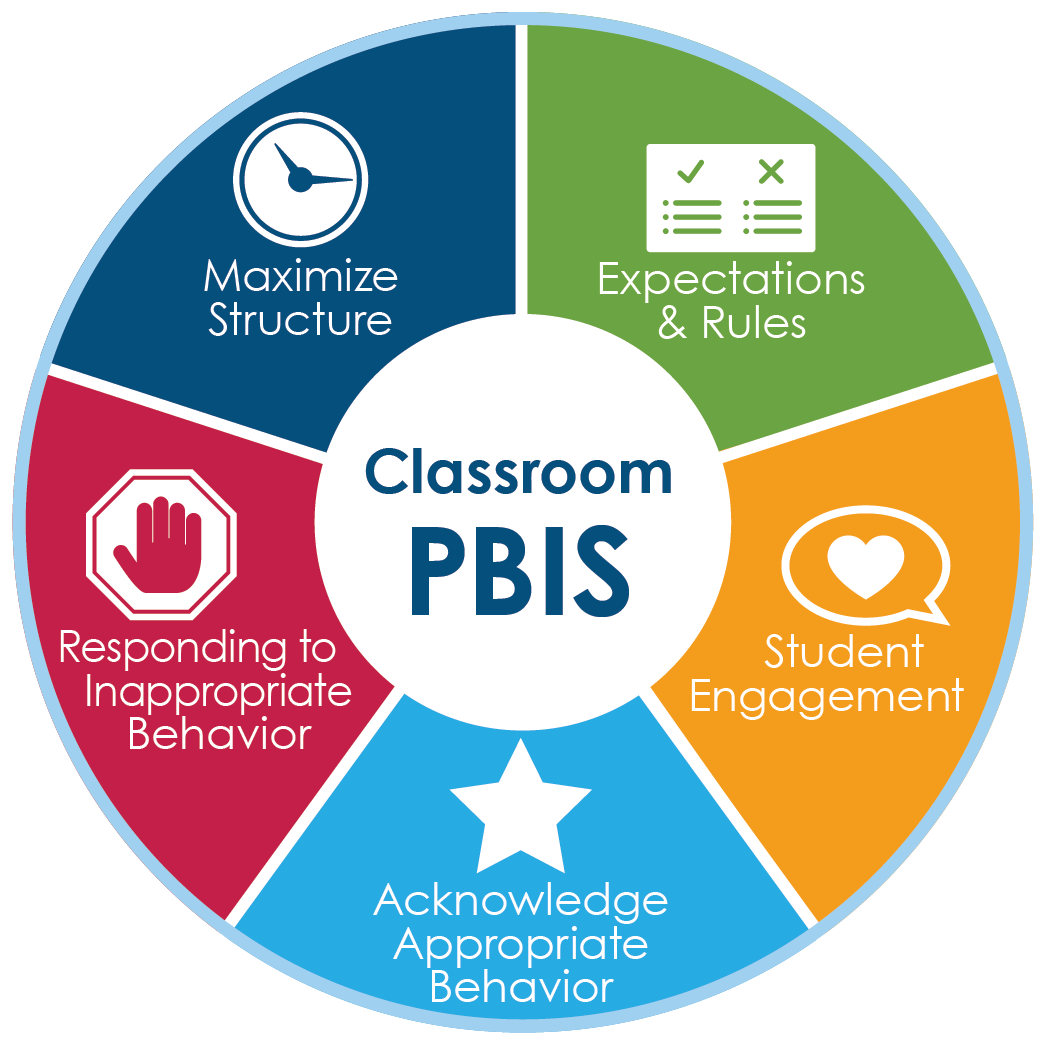Tiers
Classroom
"The strongest predictor of both sustained implementation and sustained improved student outcomes was implementation of classroom PBIS systems."

Recent research shows that classroom PBIS systems play a critical role in achieving positive student outcomes (Childs, Kincaid, George, & Gage, 2016). However, the fidelity of classroom PBIS practices can be difficult to sustain, with some research suggesting that fidelity may start to decline within a few days of implementation (Nelson, Oliver, Hebert, & Bohaty, 2015). As a result, schools are encouraged to engage in regular assessment and on-site coaching of critical classroom management practices.

Research supports five essential practices for classroom PBIS
Classroom teachers have the flexibility to design specific classroom management strategies that are responsive to their student's backgrounds and fit with their own personal style of teaching. Those strategies should be aligned to the five categories that research has linked to positive student outcomes:
- Maximize structure in the classroom with predictable routines and a safe, orderly environment
- Teach, monitor, and reinforce expectations and rules that are aligned to the school-wide expectations
- Actively engage students by providing contextually relevant instruction that includes high rates of opportunities to respond
- Use a continuum of contextually relevant strategies to acknowledge appropriate behavior
- Use a continuum of contextually relevant strategies to respond to inappropriate behavior
Classroom Resources
-
The FLPBIS Project offers an online guide to support PBIS coaches in using a structured problem-solving process to help teachers improve their classroom PBIS systems. District-level training on the classroom guide is available through your FLPBIS Project contact.
-
To access case studies and coaching materials related to classroom implementation, visit our school-level coaching page.
-
Tools for data collection and examples of using data to support classroom implementation can be found on our evaluation page.
- Go straight to our web-based Classroom Assistance Tool.
References:
-
Epstein, M., Atkins, M., Cullinan, D., Kutash, K., and Weaver, R. (2008). Reducing Behavior Problems in the Elementary School Classroom: A Practice Guide (NCEE #2008-012). Washington, DC: National Center for Education Evaluation and Regional Assistance, Institute of Education Sciences, U.S. Department of Education. http://ies.ed.gov/ncee/wwc/publications/practiceguides.
-
Childs, Kincaid, George and Gage (2016). The Relationship between School-Wide Implementation of Positive Behavior Intervention and Supports and Student Discipline Outcomes. Journal of Positive Behavior Interventions, 18(2), pp. 89-99.
-
Nelson, Oliver, Hebert, and Bohaty (2015). Use of Self-Monitoring to Maintain Program Fidelity of Multi-Tiered Interventions. Remedial and Special Education, 36(1), pp. 14-19.
-
Oliver, R., Wehby, J., and Reschly, D., (2011). Teacher classroom management practices: effects on disruptive or aggressive student behavior. Campbell Systematic Reviews.
-
Simonsen, B., Fairbanks, S., Briesch, A., Myers, D., and Sugai, G., (2008). Evidence-based practices in classroom management: Considerations for research to practice. Education and Treatment of Children, 31, 3, 351-380.
